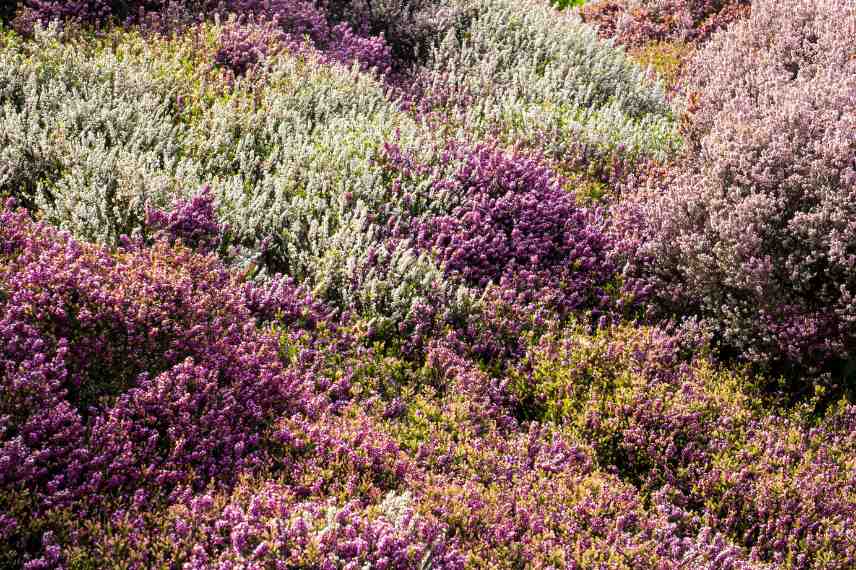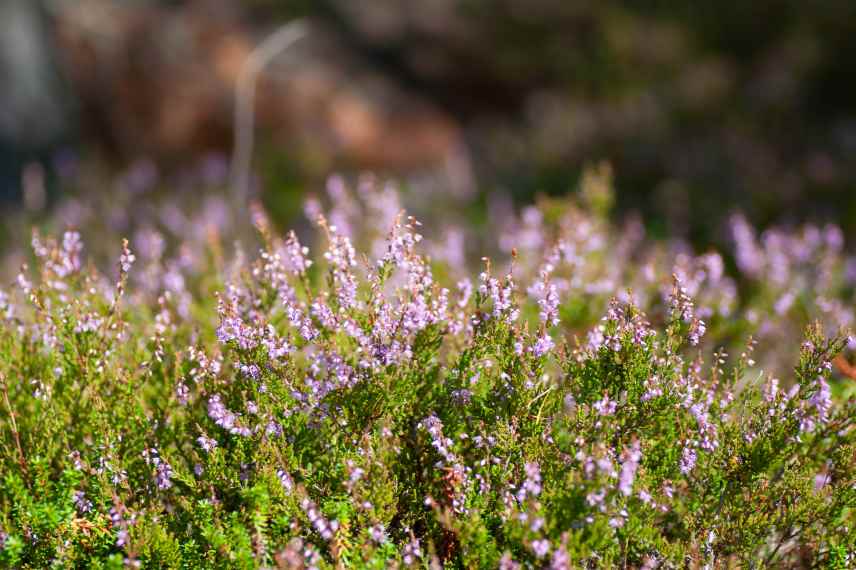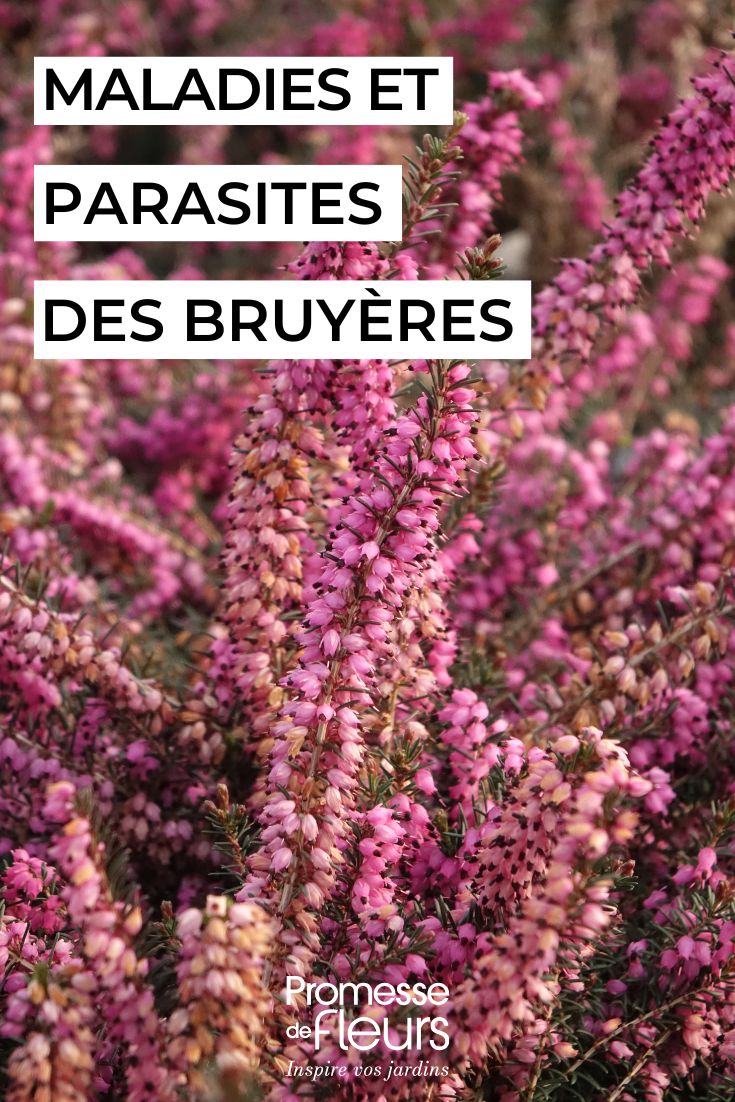
Diseases and Parasitic Pests of Heathers: Symptoms, Natural Treatments and Prevention Tips (Note: I've used "parasitic" as per the glossary instruction, though in botanical contexts we'd typically say "pests" - please confirm if this is the preferred usage. The rest follows British English conventions for horticultural content.)
How to recognise, treat and prevent them?
Contents
Hardy and robust for most varieties, heathers rarely develop diseases, and they are also appreciated for this resilient nature. While they are not known to attract pests, depending on growing conditions, some may see their foliage weaken or wither, affected by fungal diseases.
Here are the main diseases that can affect heathers, whether they are summer or winter heathers.

Very hardy and resilient, heathers rarely fall ill, though they may sometimes be affected by fungi when not grown in suitable soil
Phytophthora: The Most Common Disease
Phytophthora cinnamomi is a formidable fungal disease that affects many plants known as heathland species, meaning those that thrive in acidic soil, such as heathers. This fungus (a soil-borne oomycete, often mistakenly confused with a true fungus) lives in the soil, attacking the roots and collars, particularly in warm conditions. It thrives in moist and warm environments, penetrating the roots and moving upwards through the plant, thereby blocking the transport of water and nutrients. It primarily targets very hardy heathers of the Erica and Calluna types.
- Symptoms: Phytophthora often manifests as sudden wilting of the leaves, especially in summer when temperatures are high. The leaves may turn yellow, then take on a brown to greyish hue and dry out rapidly, causing entire branches to die quickly. This can lead to the death of all or part of the plant if not treated in time.
- Treatment: Uproot and dispose of severely affected plants at a waste disposal site. To treat phytophthora, it is recommended to use a suitable fungicidal product that can be applied directly to the plant. It is also crucial to improve soil drainage to prevent water from pooling around the roots. For lightly affected heathers, apply foliar fertilisers regularly (which ones?).
- Prevention: Avoid overwatering by watering moderately and ensuring the soil is well-drained. Plant heathers in aerated soil and avoid areas where water may accumulate. Using high-quality heather soil and avoiding heavy or poorly drained soils can also help reduce the risk of phytophthora infection. Foliar fertilisers rich in trace elements (Mg, Mn, Zn) can strengthen the plant’s resistance but do not cure the infection. Finally, among natural solutions, garlic has a mild fungicidal effect, and nettle stimulates the plant’s defences, but they cannot stop an active infection.
*Rhizoctonia solani*: A Silent Scourge for Heathers in Damp Soil
Brown root rot (Rhizoctonia solani) is a soil-borne fungal disease that affects heathers, particularly in damp and poorly ventilated environments. It often develops when plants are spaced too closely or when foliage is dense, creating ideal conditions for fungal proliferation. Rhizoctonia solani generally affects all heathers, but Erica carnea and Daboecia may be slightly more susceptible due to their denser foliage.
- Symptoms: Rhizoctonia causes stem dieback and browning of leaves, often accompanied by the formation of brown mycelium on affected parts. Leaves may dry out and fall, leaving the plant with a stunted appearance. The mycelium can sometimes appear white to pale brown and is visible around the collars or base of stems.
- Treatment: To combat Rhizoctonia, ensure good air circulation between plants to reduce humidity. Avoid overwatering and make sure the soil is well-drained to prevent fungal spread.
- Prevention: Space plants sufficiently to prevent foliage from touching and promote better air circulation. Use a well-draining substrate to avoid moisture buildup around the roots.
Phytium: A Dreaded Root Rot Affecting Young Heathers
Pythium ultimum is a soil-borne oomycete responsible for root rot, particularly in young Calluna heather plants in waterlogged soil. It hampers growth by attacking the roots, which turn black and become spongy. This opportunistic parasitic organism thrives when soil oxygenation is insufficient, in damp and poorly drained soils. It compromises the plant’s ability to absorb the water and nutrients essential for its growth.
- Symptoms: rapid wilting, softened leaves, followed by yellowing indicating the plant is no longer receiving sufficient nutrients. The roots gradually turn brown, then disintegrate.
- Treatment: apply a specific anti-oomycete fungicidal treatment (fosetyl-aluminium or propamocarb) to infected plants. Quickly improve drainage and reduce soil moisture by adjusting watering practices to prevent roots from being constantly wet.
- Prevention: avoid planting heathers in areas where the soil remains constantly damp; ensure good soil drainage to prevent water accumulation around the roots. For potted plants, avoid overly fine substrates that retain water. Cinnamon infusion, garlic decoction, and fern manure can help prevent infection in healthy substrates.

Pythium can affect young Calluna plantings
Honey fungus or Armillaria: rare but fatal
Honey fungus, or Armillaria mellea, is a wood-decaying fungus that primarily attacks the roots of woody plants, including heathers, although this is rare. It often occurs in soils already colonised by this fungus, particularly in wooded soils and gardens established on former forest land or after tree felling. All heathers are susceptible, but this fungus is uncommon in outdoor ornamental cultivation.
The fungus infects roots deeply, causing necrosis of vascular tissues and thus interrupting water and nutrient uptake. It can survive for many years in dead roots or stumps of former trees.
- Symptoms: signs include gradual decline, yellowing foliage, and sometimes complete wilting. A white fungal mat under the bark of roots and blackening of tissues may also be observed. The plant may uproot easily as roots become brittle or rotten.
- Treatment: no effective curative method exists once the plant is infected. Affected plants must be removed and destroyed, followed by the elimination of contaminated roots. Avoid replanting in the same location without soil disinfection or fallow periods. No proven natural remedy exists. Contaminated soil remains problematic.
- Prevention: plant in well-drained soil, avoid buried wood debris or stumps. Ensure good sunlight exposure and refrain from planting heathers near old hedgerows or woodland areas if soil contamination is suspected.
Key points for treating diseased heathers
Phytophthora, Pythium and Rhizoctonia are highly persistent soil-borne oomycetes or fungi! Natural treatments such as nettle, horsetail or garlic teas can strengthen the plant, slow the spread, but none eliminate an established infection. They remain preventive and only boost the plant’s defences.
For severe cases (Phytophthora and Pythium), the occasional use of an approved fungicidal may still be necessary to save the plant.
The best natural strategy lies in planting methods and prevention.
As a reminder, heathers thrive in:
– very well-drained soil
– sunny exposure
– acidic to neutral soils, except for Erica carnea and Erica vagans, which tolerate lime
Lastly, always perform your heather pruning with sterilised tools!
- Subscribe!
- Contents



































Comments